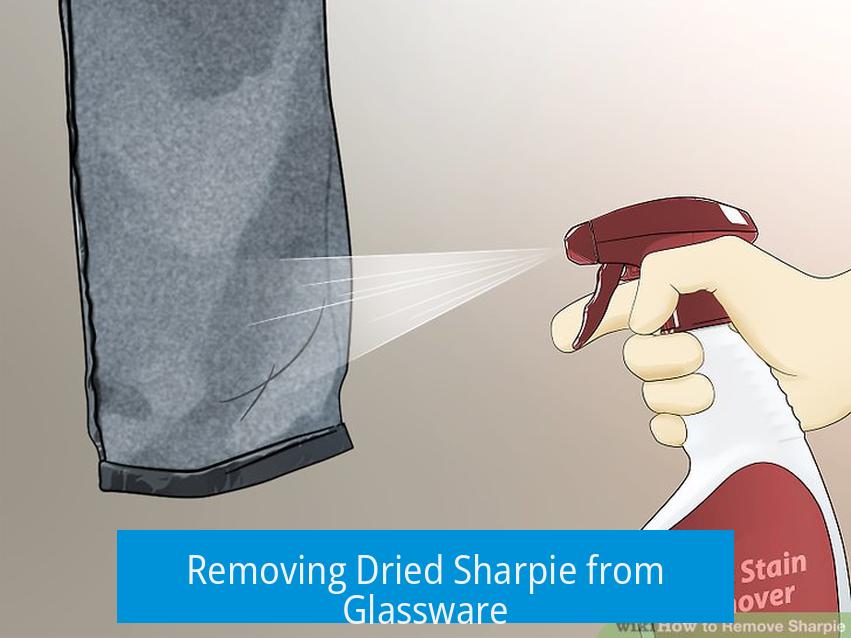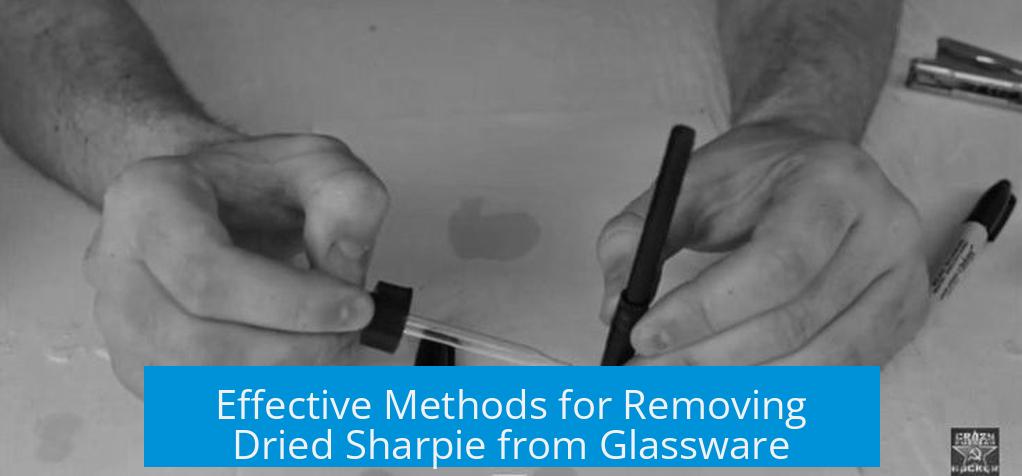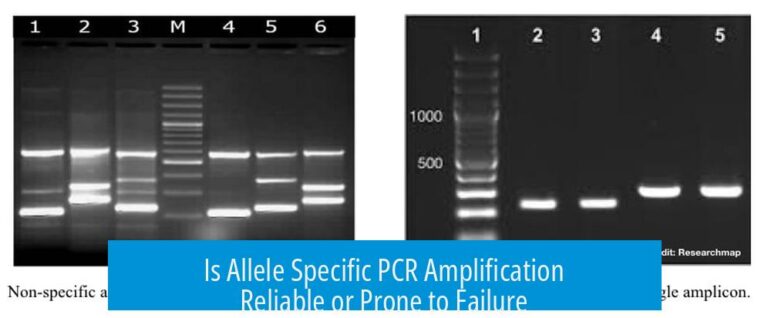Removing Dried Sharpie from Glassware

Dried Sharpie marker on glassware can be effectively removed using several straightforward methods involving solvents, mechanical action, or chemical treatments. The success of each technique depends on how long the ink has been on the surface and whether the glass is etched.
Solvent-Based Removal
Solvents like acetone and methanol often dissolve dried Sharpie ink on glass. Soaking the glassware in acetone or methanol softens the ink, making it easier to wipe away. Many users find that soaking and applying “elbow grease”—vigorously scrubbing—completely removes stubborn marks.
- Soak glassware in acetone or methanol for several minutes to hours, depending on ink age.
- Wipe or scrub the ink off with a cloth or sponge.
- Ethanol or isopropyl rubbing alcohol typically removes fresh or less stubborn marks efficiently.
For older Sharpie stains, writing over them with a whiteboard marker and then wiping off may dislodge the original ink. This relies on solvent action of the whiteboard marker ink.
Mechanical and Abrasive Methods
Mechanical removal involves scrubbing with abrasives. Baking soda, when applied as a mild abrasive paste, can quickly remove Sharpie from non-etched glass surfaces. This method is gentle yet effective without chemicals.
- Create a paste with baking soda and water.
- Rub the paste onto the ink stain using a cloth or sponge.
- Rinse thoroughly after the ink lifts.
Long soaking in alkaline detergents such as Alconox overnight combined with scrubbing can also loosen Sharpie marks.
Chemical Treatments
Dilute acids or base baths are less commonly used but effective for deeply embedded or etched glass stains. Rinsing with dilute hydrochloric, acetic, or nitric acid can break down organic inks, followed by thorough rinsing. Base baths may degrade the ink but require careful handling.
Alternative Techniques

Some experimental approaches exist:
- Ashing: High-temperature treatment to burn off organic residue is seldom practical for lab glassware.
- Melting the glassware: Not advised due to risk of damage and altered glass properties.
Practical Tips
- Dishwashers may remove some Sharpie marks but are not guaranteed for dried ink.
- Combining solvent soak and scrubbing typically yields the best results.
Summary of Key Points
- Soak in acetone, methanol, or rubbing alcohol to dissolve dried Sharpie.
- Use baking soda paste or Alconox soak plus scrubbing to physically remove stains.
- Dilute acids or base baths can remove ink in etched or highly stained glass.
- Write-over techniques with whiteboard markers may help loosen ink.
- High-temperature or melting methods are generally impractical.





Leave a Comment